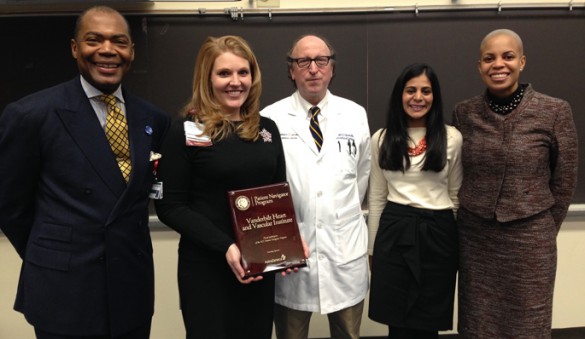One way to reduce health care spending is to curb preventable hospital admissions, starting with unplanned readmissions within 30 days of hospital discharge, an oft-cited health care quality indicator.

According to John Schnelle, Ph.D., professor of Medicine and director of Vanderbilt’s Center for Quality Aging, between 19 and 24 percent of Medicare patients discharged to post-acute care facilities are readmitted to a hospital within 30 days.
A program launched by Schnelle in January 2013 aims to reduce readmissions for Medicare patients transferred from Vanderbilt University Hospital to any of 23 area skilled nursing facilities, or SNFs. The specific goal is 17 percent reduction, by 2015, in 30-day hospital readmissions directly from these SNFs.
“After these initial 12 months, we’re finding that our original premise still holds: if you really want to prevent readmission, start by improving the discharge process, handover communication and post-acute management of chronic diseases and conditions,” Schnelle said.
“We’re also beginning to get inklings of how we could manage specific patient problems, or clusters of problems, differently in the hospital to avoid eventual readmissions.”
The first strategies adopted by the team included an extra level of patient evaluation prior to transfer, a more consistent and focused patient handover, separate follow-up phone calls with nurses and patients three to five days after transfer, and routine analysis of any readmissions.
Preliminary data indicate a 5 to 7 percent reduction in these readmissions over this first year of the project, but Schnelle stressed that this figure is subject to revision pending an analysis of Medicare claims data.
Before transfer, a nurse from Schnelle’s team examines the patient for any readmission warning signs, which may be quite distinct from the acute problems that brought the patient to the hospital. The nurse completes a transition summary form for quick reference by the SNF’s receiving team.
Another new handover form is devoted to medication management. Assembled and annotated by pharmacists in partnership with physicians, it covers the recent medication history and any recommendations for restarting home medications.
The new handover documents — both of which are also sent to the patient’s primary care provider — are “designed to give post-acute care providers the information they need to start care safely, and to do so quickly,” Schnelle said.
The handover is capped with a nurse-to-nurse phone call.
Now an additional measure is coming into play. VUH hospitalists have begun initiating telephone discussions with SNF quality of care committees whenever an apparent opportunity for post-acute care improvement crops up in readmission documentation.
Schnelle expects ongoing analysis of readmissions to uncover new patterns, including clusters of patient problems that may warrant longer hospital stays.
He has been surprised at the high numbers of patients who are transferred to a SNF, are sent home after a stay, and wind up re-entering a hospital within 60 days of their discharge from VUH. These readmissions are beyond the project’s current purview, but “we’re going to have to do something about that at some point,” he said.
Schnelle’s project is supported by a Health Care Innovation Award from the U.S. Health and Human Services Center for Medicare & Medicaid Services.
“Any new costs associated with reducing Medicare readmissions are apt to be dwarfed by the cost savings for the taxpayer,” Schnelle said.
The Accountable Care Act offers hospitals and physicians incentives to lower post-acute care costs and poses penalties for hospitals with high 30-day readmission rates.















